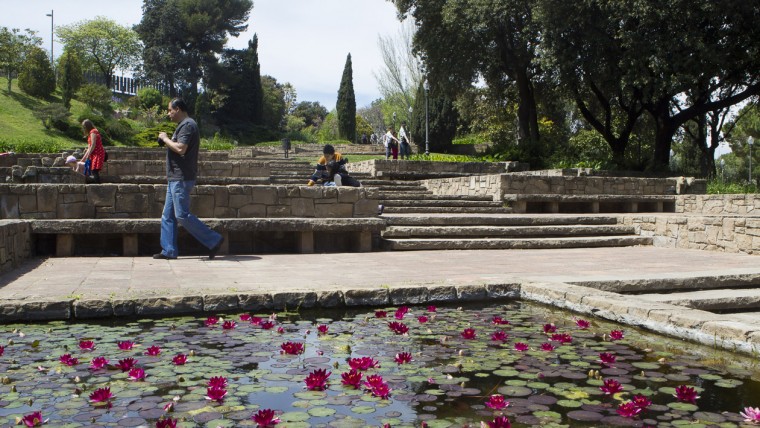
The Mossèn Cinto Verdaguer Gardens on Montjuïc descend a gentle slope that offers visitors a good view of Barcelona, the sea and, on clear days, the entire Montseny massif. They are part of Montjuïc Park and one of its most outstanding theme gardens, near the Joan Brossa Garden and the Tres Pins nursery.

History
As with so many other green spaces in Barcelona, especially in the Montjuïc area, these gardens are located in an old quarry. They were officially opened on the same day as the Mossèn Costa i Llobera and Joan Maragall gardens: 22 June 1970, and are one of the three parks dedicated to Catalan poets.

Art and Architecture
La noia dels lliris (The Girl of the Lilies – 1970), which is near the lake, pays homage to Mossèn Cinto Verdaguer and bears an inscription with the following verses by the great poet: “Bonica és la rosa / més ho és el ram / més ho és el lliri / que floreix tot l’any” (Pretty is the rose / more so the bouquet / more so the lilly / which blossoms all year round). Sebastià Badia’s Maternitat (Maternity – 1970), is next to the gardeners’ shed, under a large maritime pine. It is a serene, sweet and very tender image of a woman looking at her son as she holds him in her lap.
-
- Phone number
- Tel.: 010
-
- Accessibility
- Accessible for people with physical disabilities
-
- Titularity
- Public center
- Address:
- Av Miramar, 30
- Districte:
- Sants-Montjuïc
- Neighborhood:
- el Poble-sec
- City:
- Barcelona
Timetable
| Periode | Dies | Hores |
|---|---|---|
Horari d'hivern de l'1 de novembre al 31 de març |
Cada dia | de 08.00 h a 19.00 h |
Horari d'estiu de l'1 d'abril al 31 d'octubre |
de 08.00 h a 21.00 h |
aproximada, en funció de
l'horari solar (tanquen
quan es fa fosc, al capvespre)

